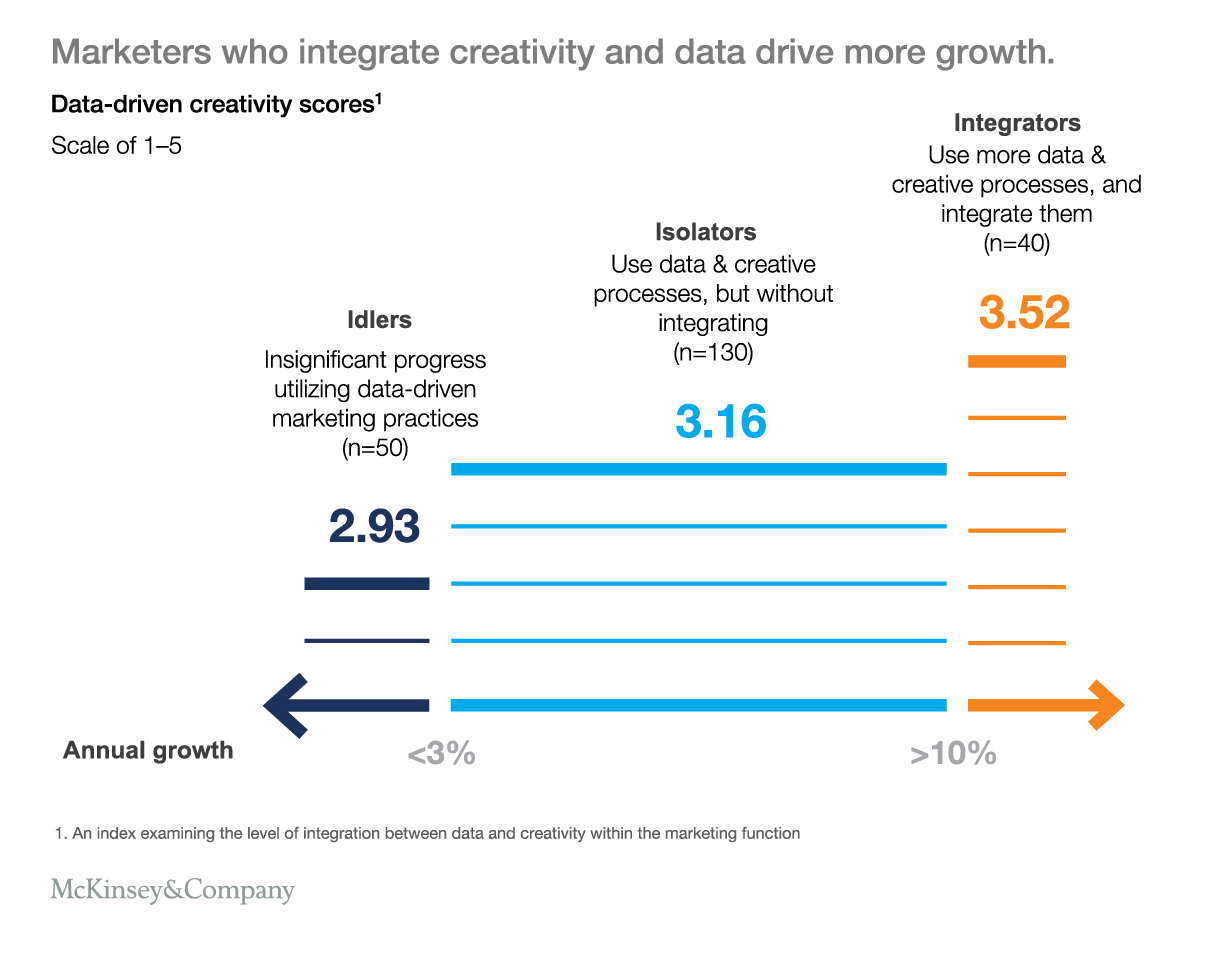
The marketing industry is going through massive changes at the moment; one where creativity is being merged with data in order to produce accurate results. But, to traditional marketers, this amalgamation barely makes any sense. After all, creativity and data are two opposite ends of two entirely different concepts.
You will be shocked to know that the majority of the decisions that you thought were based on creativity were actually supported by data as well. Analyzing the major trends, seeing what appeals to the masses, and creating a product as a response to all this, is basically rooted in data. So, now that you know marketers have been relying on data to make creative decisions, let us further explore this topic.
Creativity as Supported by Data
The majority of marketers believe that technology and creativity will become crucial in developing great marketing strategies. However, there are still a lot of unanswered questions regarding how organizations can benefit from this amalgamation. According to a report by McKinsey, organizations that have merged these two sectors are more successful than those who are still looking to merge creativity with data.
 Source: Report by McKinsey&Company
Source: Report by McKinsey&Company
Various companies insist that the answer to this supposed confusion lies in the mixture of data scientists with creative talent, in a way that creates a perfect example of marketing engineering. Overall, marketing is all about how a certain piece interacts with the consumers. In a way, it is about consumer engagement. With creativity and data onboard, marketers can not only engage users but do so in a way that guarantees results.
Creativity needs to be guided, validated, and even helped to some extent; all of which can be ensured through analytics and data. On top of this, technological advancements through data analysis can supercharge the marketing or creative processes by allowing marketers to benefit from rich insights from targeted consumers. However, to achieve a perfect amalgamation, there needs to be harmony between data and creativity. This is the only way of making great business decisions.
For instance, take the example of Spotify which harnessed the power of data and used it to drive a creative marketing campaign. Leveraging the available user data, Spotify was able to initiate a new era of song-listening experience. Through the available stats, they were able to shape their data-driven campaigns that made use of outdoor billboards that offered goals for the upcoming year. With the help of this marketing strategy, they created new year’s goals ringed with humor such as skipping a dinner offer from a friend because they have added such and such songs in their playlist, and more.
This data-driven marketing campaign was not only timely but it also captured the attention of numerous individuals, thus making this campaign extremely successful.
Just like Spotify, organizations should not wait any longer to merge data with creativity. However, this should be done in a specific manner in which both of them complement each other. Remember, forcing this relationship will never work as the key lies in finding a solid balance.
Data Should Enhance Creativity (Not Replace It)
Today’s market is increasingly competitive. Every other day, brands are trying to stand apart from the rest by coming up with unique techniques to make their voices heard. However, sometimes, you need a little more than just the right team members to break through the crowd and have your message heard the way you want it.
Through machine learning or other similar technology, marketing companies have a chance to peel back the layers and reach the core of crucial user data. With the proper data, comes insight, and with the right insights, marketers stand a great chance of delivering accurate campaigns that are driven by creativity.
As other technological advancements become more prominent in the marketing sector, more and more companies will adopt the practice of making crucial data understandable. After all, the most engaging marketing campaigns are created with useful insights regarding any particular audience. This is where the relationship between data and creativity can help companies discover new correlations.
Is there a Risk of Everything Becoming Mundane?
Data is numbers and numbers are boring. Yes, there is a massive risk of making everything mundane and completely missing the point by creating campaigns that do not hit the target. Data and other technological tools are there to help create an impressive marketing campaign. However, depending only on data to do its magic is where it could all go wrong.
Data is just a small piece of the entire game and depending on just a small piece to do all the thinking work would only result in a missed target. So, while data is important, the focus should be directed towards other creative elements that help formulate a marketing campaign. Data helps in separating fact from fiction and that is about it. This leaves the human creativity and interpretation to understand the customer-driven data and generate meaningful content from it.
Conclusion
Digital marketing services without data-driven insight are like trying to shoot a target, blindfolded. Considering this, brands and marketing agencies need to create their messages with their customers in mind, and data could help guide the process. Embracing the right tools will help break up the data and speed up the analysis process. Handing over such tasks to the right tools will free marketers of tedious tasks and provide them with plenty of time to craft unique ad experiences that will delight and surprise the target audience.
The great thing about creativity is that different people have different preferences. This means that, if a specific group likes a particular thing, it is not necessary that the same thing will be well-received by a separate group of audience. While trying to create a better ad experience, marketers need to understand this and, as a result, produce campaigns that will resonate with at least a larger part of the population.
At the end of the day, a marketer’s job is to create experiences that are personalized, memorable, and build customer loyalty. This is only possible if a specific ad piece engages its readers through their passion, interests, and problems. This cannot be achieved by pitting data against creativity but rather the very amalgamation of these two elements will create solutions that will be worthy of praise.
Cover image source: Morning Brew